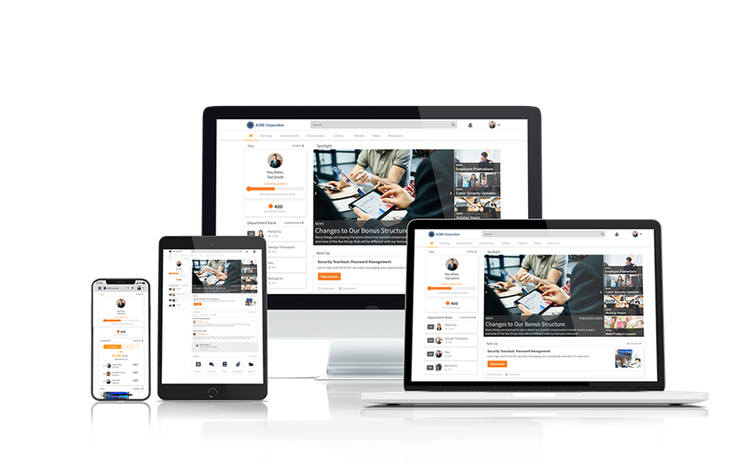Connecting LMS and LXP: The Future of Unified Learning Experiences

For years, Learning Management Systems (LMS) have been the cornerstone of organizational training. They ensured compliance, tracked completions, and delivered standardized content. But as workforce expectations evolved, so did learning technologies. Enter the Learning Experience Platform (LXP)—a user-centric, adaptive layer focused on engagement, personalization, and discovery. While both LMS and LXP serve distinct purposes, relying on one without the other creates friction, inefficiencies, and missed opportunities.
The future of enterprise learning lies not in choosing between LMS and LXP—but in connecting them. When these systems work together, organizations unlock a holistic learning ecosystem that balances structure and flexibility, compliance and curiosity, and performance and personalization.
Don't Miss: Our latest infographic, “Integrating Learning Ecosystems: Creating Seamless Journeys Across LMS, LXP, and More,” to see how integrating your learning systems can unlock a more seamless, engaging, and performance-driven training strategy.
Why Integration Is No Longer Optional
In a 2023 survey by Training Industry, 62% of L&D professionals said that learners now expect the same intuitive, on-demand experience from workplace learning as they do from Netflix or Spotify. However, most LMSs are built for administrators, not for end users. LXPs, on the other hand, are designed to mimic consumer-grade interfaces, offering personalized content feeds, AI-powered recommendations, and social learning elements.
According to Brandon Hall Group, organizations that integrate LXP functionality into their LMS experience a 30% increase in learner engagement and a 45% improvement in learning efficiency.
Trying to deliver modern learning with an LMS alone can limit your impact. But deploying an LXP without tying it into compliance, assessment, and reporting frameworks leaves critical gaps. A connected ecosystem is the only way to deliver both learner-driven and organization-driven development.
What a Connected LMS + LXP Ecosystem Looks Like
A unified learning experience doesn’t mean a single platform has to do everything—it means the right tools are working together. Here's how they complement each other:

When connected, the LMS ensures structure and accountability while the LXP fuels curiosity and continuous learning. The result? A learning experience that is both effective and engaging—what Deloitte calls a “learning in the flow of work” strategy.
Benefits of a Unified Learning Experience
- Improved Learner Engagement
A connected ecosystem reduces friction between mandatory and self-directed learning. Employees move seamlessly between compliance training and skills development—all within a single interface. According to LinkedIn’s 2023 Workplace Learning Report, 87% of learners say a seamless experience increases their likelihood to engage with training regularly. - Stronger Data Insights
When LMS and LXP data are siloed, L&D leaders only see part of the picture. Unifying these platforms enables skill progression tracking across both formal and informal learning activities, improving evaluation and planning. - Personalized Learning at Scale
LXPs use AI to suggest relevant content based on job role, performance data, and past behavior. When this insight feeds into the LMS, organizations can automate adaptive learning paths that align with business needs. - Streamlined Admin & Reporting
Integration reduces duplicate work—like enrolling learners in both systems and manually syncing data. Administrators gain access to consolidated dashboards and real-time analytics for smarter decision-making. - More Effective Skill Development
By blending structure (LMS) and exploration (LXP), employees get both the guidance and freedom to develop the right skills at the right time.
Infographic: Integrating Learning Ecosystems: Creating Seamless Journeys Across LMS, LXP, and More
From compliance to career growth, discover how LMS and LXP platforms work better together—and why a connected ecosystem is essential for modern workforce development.
Integration in Action: How Unboxed Supports Unified Learning
At Unboxed, we believe learning should be fluid, personalized, and measurable. That’s why our Skill Building Platform, anchored by Spoke® and Mentor™, is designed to integrate seamlessly with both LMS and LXP environments—acting as a connective layer between structure and experience.
Here’s how Unboxed delivers a unified learning experience:
- Spoke® as a Central Hub
Spoke® serves as a modern LMS that handles compliance, certification, content delivery, and reporting—but with an interface learners enjoy using. Its open architecture allows it to sync with LXPs, CRMs, and HR systems, ensuring continuity across the tech stack. - Mentor™ for Real-Time Practice
Mentor™, our AI-powered roleplay and feedback tool, captures data on skill proficiency and behavioral growth—feeding into dashboards that connect with both LMS and LXP platforms. - Personalized Journeys Across Systems
With custom learner journeys, Unboxed clients can create training pathways that incorporate SCORM modules from the LMS, curated content from an LXP like Degreed or EdCast, and real-time feedback from Mentor™—all while tracking learner progress in a unified view. - Analytics That Bridge the Gap
Unboxed offers analytics that tie together LMS completion data, LXP engagement, and coaching activity—providing a comprehensive snapshot of learning and performance in one place.
L&D is no longer about delivering content—it’s about delivering experiences. Today’s learners demand flexibility, personalization, and relevance. Organizations demand scalability, accountability, and outcomes. Integrating your LMS and LXP is how you deliver both.


